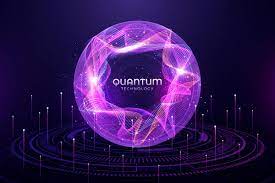I. Introduction
Quantum computing, a frontier in the world of computing, has garnered significant attention for its potential to revolutionize the way we process information. This beginner’s guide aims to demystify quantum computing, providing insights into its fundamental principles, applications, and the paradigm shift it brings to traditional computing concepts.
II. Quantum Basics: Qubits and Superposition
a. Qubits: The Quantum Building Blocks
-
Classical vs. Quantum Bits: While classical computers use bits (0s and 1s) as the fundamental units, quantum computers utilize quantum bits or qubits.
-
Superposition: Unlike classical bits that exist in either 0 or 1 states, qubits can exist in superposition, representing both 0 and 1 simultaneously. This inherent duality expands computational possibilities.
b. Entanglement: Quantum Interconnectedness
-
Entangled Qubits: Entanglement is a unique quantum phenomenon where qubits become correlated and share information. Changes in one entangled qubit instantaneously affect the other, regardless of distance.
III. Quantum Gates and Circuits
a. Quantum Gates: Building Computational Operations
-
Quantum Gates vs. Classical Gates: Quantum gates, analogous to classical logic gates, manipulate qubits to perform quantum operations.
-
Unitary Transformations: Quantum gates execute unitary transformations, altering the quantum state of qubits in a controlled manner.
b. Quantum Circuits: Orchestrating Quantum Operations
-
Circuit Representation: Quantum algorithms are depicted as circuits, showcasing the sequence of quantum gates and operations.
-
Quantum Parallelism: Quantum circuits leverage parallelism, allowing multiple computations to occur simultaneously, enhancing computational speed.
IV. Quantum Computing vs. Classical Computing
a. Exponential Speedup: Quantum Advantage
-
Parallel Processing: Quantum computers excel in parallel processing, solving certain problems exponentially faster than classical counterparts.
-
Shor’s Algorithm: Quantum algorithms like Shor’s have the potential to factor large numbers exponentially faster, impacting classical encryption methods.
b. Quantum Supremacy: Milestone Achievements
-
Demonstrating Quantum Supremacy: Quantum supremacy refers to a quantum computer’s ability to perform a specific task faster than the most advanced classical computers. Achievements in this domain mark key milestones.
V. Quantum Applications and Real-World Impact
a. Optimization and Simulation
-
Quantum Optimization: Quantum computers excel in optimizing complex scenarios, such as logistics and supply chain management.
-
Quantum Simulation: Modeling quantum systems accurately for drug discovery and material science is a promising application.
b. Machine Learning and AI
-
Quantum Machine Learning: Quantum computing holds potential for accelerating machine learning algorithms, offering advantages in pattern recognition and optimization.
-
Quantum AI: Quantum algorithms can enhance artificial intelligence tasks, from natural language processing to complex data analysis.
VI. Current Challenges and Future Directions
a. Decoherence and Error Correction
-
Quantum Decoherence: Maintaining quantum coherence is a challenge due to environmental factors, leading to errors in quantum computations.
-
Error Correction Algorithms: Developing robust error correction algorithms is crucial for ensuring the reliability of quantum computations.
b. Scalability and Practical Implementations
-
Scalability Challenges: Scaling up quantum computers to handle large-scale problems remains a significant hurdle.
-
Practical Implementations: Bridging the gap between theoretical potential and practical applications is a key focus for researchers and engineers.
VII. Conclusion
Quantum computing, with its unique principles of superposition and entanglement, stands poised to redefine the boundaries of computational capabilities. While the field is still in its infancy, rapid advancements and milestones, such as quantum supremacy achievements, showcase its potential. As quantum computers continue to evolve, the world anticipates a future where complex problems that are currently intractable for classical computers can be efficiently addressed, opening new frontiers in science, technology, and innovation.
FAQs
-
Q: What is the fundamental difference between classical bits and quantum bits (qubits)?
-
A: Classical bits exist as 0 or 1, representing binary states. Quantum bits, or qubits, can exist in superposition, representing both 0 and 1 simultaneously, expanding computational possibilities.
-
-
Q: What is quantum entanglement?
-
A: Quantum entanglement is a phenomenon where qubits become correlated and share information. Changes in one entangled qubit instantaneously affect the other, regardless of distance.
-
-
Q: How do quantum gates differ from classical logic gates?
-
A: Quantum gates, like classical logic gates, manipulate information. However, quantum gates operate on qubits and execute unitary transformations, allowing for quantum parallelism and unique computational capabilities.
-
-
Q: What is quantum supremacy?
-
A: Quantum supremacy refers to a quantum computer’s ability to perform a specific task faster than the most advanced classical computers. Achievements in quantum supremacy mark key milestones in the development of quantum computing.
-
-
Q: What are some current challenges in quantum computing?
-
A: Challenges include maintaining quantum coherence (decoherence), developing robust error correction algorithms, and addressing scalability issues for practical implementations of quantum computers.
-

